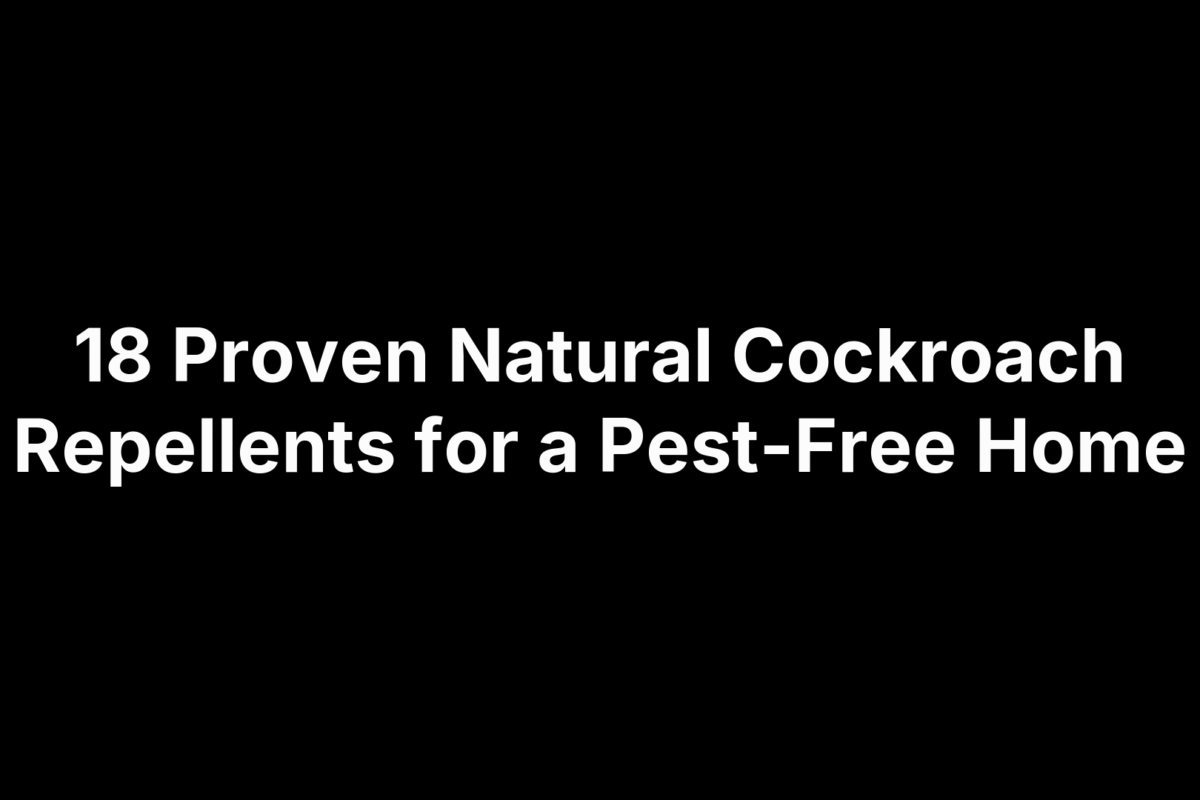The quickest, safest way to wipe out ants is to combine a sweet borax bait that the colony carries home with a vinegar or soap spray that erases their scent trails. If a parade of tiny foragers is criss-crossing your kitchen, they’re not being spiteful—just capitalizing on crumbs, dripping faucets, and warm shelter. The trick is removing the payoff while choosing methods that won’t put kids, pets, or the planet at risk.
This guide walks you through 14 smart, low-toxicity tactics you can start with the contents of your pantry or a quick hardware-store run. Each remedy includes why it works, what you’ll need, and step-by-step instructions, so you can mix and match until the last ant disappears. And if the infestation digs in—carpenter ants chewing studs, multiple nests sprouting overnight—we’ll show you when it’s time to bring in an eco-friendly professional for backup. Ready for an ant-free home? Let’s get started.
1. Pinpoint and Seal Entry Points
The first battle is won outside the pantry, not in it. Trace the marching line back to where it slips through your walls and you’ll cut off the supply chain—an essential move in any “how to get rid of ants” game plan.
Why finding the doorway is half the battle
Scout ants follow invisible pheromone highways from the nest to typical weak spots: windowsills, door thresholds, gaps around plumbing, HVAC lines, and hairline cracks in the slab or siding. If that break stays open, new workers will replace every ant you squash, so sealing stops the loop before it restarts.
Tools & materials you’ll need
- Flashlight
- Painter’s tape or chalk (to mark active trails)
- Silicone caulk and caulk gun
- Weather-stripping
- Steel wool for larger cavities
- Scraper or putty knife for prep
Step-by-step sealing checklist
- Follow an active ant column to the outdoor breach.
- Wipe the area with a 50⁄50 vinegar mix to erase pheromones.
- Fill hairline cracks with caulk; stuff bigger holes with steel wool, then seal.
- Reinspect 24 hours later—if a new trail forms, repeat the process.
2. Keep Surfaces Spotless and Food Airtight
Mess is the easiest ant magnet to fix yet the one most people overlook. Strip away their food buffet and workers are forced to return home empty-mandibled. A five-minute wipe-down can do more than any pesticide fogger.
How sanitation starves a colony
They burn energy hauling crumbs; when none remain, the colony reallocates scouts elsewhere. Pairing spotless counters with a borax bait meets the PAA “fastest way” standard.
Kitchen & pantry action plan
- Wipe counters with soapy water or a 50/50 vinegar mix after every meal.
- Vacuum floors daily; empty the canister outdoors.
- Stash sugar, cereal, and pet kibble in gasket-sealed bins.
- Rinse recyclables and deodorize trash cans with baking soda.
Hidden hotspots to address
- Dishwasher seals and filter trays
- Under-fridge drip pan
- Sticky spice racks
- Compost pail rims and lids
3. Sprinkle Food-Grade Diatomaceous Earth (DE)
Diatomaceous earth—often shortened to DE—is the no-poison powder pros grab when kids or pets are on the floor. A light dusting in cracks and seams quickly dents ant numbers.
Why DE works
The chalky particles are fossilized algae; under a microscope each shard looks like glass. When ants crawl through, the edges slice their waxy armor and the insects dehydrate within hours.
Application guide
- Puff a barely visible line along window tracks and baseboards.
- Dust under the stove, fridge, and sink cabinets.
- Outside, treat patio cracks before dawn.
- Reapply after mopping, vacuuming, or heavy rain.
Safety & cleanup tips
- Wear a dust mask; even food-grade powder can irritate lungs.
- Vacuum with a HEPA filter once trails stop to prevent airborne residue.
4. Spray a Vinegar Solution for Instant Disruption
White vinegar is the Swiss-army knife of DIY pest control: it’s inexpensive, non-toxic, and the sharp smell trashes the chemical breadcrumbs ants rely on. A quick spritz can clear a countertop in seconds and buy you time to roll out longer-acting baits.
Science behind the smell
Acetic acid overwhelms ant chemoreceptors and literally dissolves the pheromone residue that guides workers to food. No trail, no traffic. Because the liquid also lowers surface pH, lingering odor keeps scouts from redrawing the map for several hours.
DIY recipe & usage
- Mix equal parts white vinegar and water in a clean spray bottle.
- Optional: add 5–10 drops citrus or peppermint oil for extra punch.
- Soak visible ants, wipe up, then respray the path to erase scent signatures completely.
Where and when to deploy
Hit countertops, floor seams, garbage can rims, and door thresholds the moment you spot movement. The solution is safe for most non-porous surfaces, but spot-test natural stone before drenching.
5. Set Out Borax & Sugar Liquid Bait Stations
Chasing every crawler you see is a losing game; you need the colony to self-destruct from the inside. A sugar-laced borax syrup turns the ants’ own food-sharing instinct against them and does the demolition work while you sleep.
Why this is the colony killer
Borax (sodium borate) scrambles an ant’s digestive and metabolic systems, but it acts slowly enough that workers survive long enough to ferry micro-doses back to nestmates and the queen. One well-placed bait can wipe out thousands you never even notice.
3-ingredient recipe
1½ cups warm water + ½ cup white sugar + 1½ Tbsp borax
Stir until all crystals dissolve and the liquid looks clear.
Station building & placement
- Soak cotton balls or paper wicks in the solution.
- Drop them into jar lids, plastic bottle caps, or repurposed takeout sauce cups.
- Cover with wax paper poked with pin-holes to keep pets out.
- Set stations along active trails but a few feet from food prep areas; refresh every 48–72 hours until traffic stops.
Common mistakes to avoid
- Using a heavy borax mix—ants die before sharing.
- Spraying or wiping scouts you see, which warns the colony.
- Moving stations too soon; give them at least three days of uninterrupted feeding.
6. Repel with Essential Oils (Peppermint, Tea Tree, Citrus, Clove)
Essential plant oils smell great to us but scramble ant navigation systems, making them perfect for non-toxic perimeter defenses.
Oils ants hate & why
Peppermint, tea tree, lemon, and clove oils contain monoterpenes that overload ant scent receptors and erase colony trails.
Quick mix spray
Blend 10–15 drops of your chosen oil, 1 cup water, and 1 tsp vodka (emulsifier) in a spray bottle; shake before each use. Mist baseboards, window frames, and trash lids.
Other application ideas
- Soak cotton balls and tuck into pantry corners or under the sink.
- Add five drops to mop water for a whole-floor barrier.
Pet & surface cautions
Tea tree can be toxic if a cat or dog licks it; stick to peppermint or citrus in pet zones. Always dilute oils to prevent dulling varnish or plastics.
7. Create a Dish Soap & Water Barrier
When you need an instant, low-toxicity knock-down, reach for the kitchen sink. The same surfactants that cut grease also collapse an ant’s waterproof armor, making a sudsy spray one of the quickest “how to get rid of ants” tricks around.
Does Dawn kill ants?
Yes. The soap’s surfactant molecules strip away the waxy layer that keeps ants from drying out; within minutes they dehydrate and die.
Mix & deploy
2 Tbspliquid dish detergent1 quartwarm water
Shake in a pump sprayer, then mist ant lines, window frames, and trash-can rims. Wipe the area afterward so the residue doesn’t attract dust or new scouts.
Best use-cases
- Emergency trail shutdowns while you set up slower-acting baits
- Pre-treating picnic tables, patio furniture, or grill stations before outdoor meals
8. Baking Soda & Powdered Sugar Two-Step
If the borax recipe feels too “chemical,” raid your pantry again. A simple mix of baking soda and powdered sugar can sabotage an ant colony almost as effectively, and it’s safe enough that most people already let toddlers help bake with both ingredients.
How it eliminates colonies
Baking soda fizzes when it meets the formic and citric acids inside an ant’s gut, creating lethal internal pressure. Powdered sugar masks the alkaline taste, tricking worker ants into hauling the blend back to the nest so the whole crew—queen included—gets a dose.
Simple assembly
- Combine baking soda and powdered sugar in a 1:1 ratio.
- Stir well to avoid clumps, then spoon a teaspoon into shallow jar lids.
- Set the lids along active indoor trails; replace whenever the mixture turns crusty.
Added benefit
The ingredients cost pennies, emit no harsh odors, and pose minimal risk to dogs or cats that might investigate—just keep the trays on countertops or behind appliances to be extra safe.
9. Draw a Line with Chalk, Baby Powder, or Talc
Sometimes the simplest line of defense really is a literal line. Ordinary school chalk or a quick puff of unscented baby powder creates an instant, kid-safe barrier that most ant species refuse to cross.
Physical & chemical barrier explained
Calcium carbonate (chalk) and talc cling to an ant’s feet, wick away the waxy oils that keep it hydrated, and blur the pheromone tracks it depends on. Workers halt to groom—and the march stops.
Where to chalk
- Door thresholds and window sills
- Gap between baseboard and floor tiles
- Pantry shelf edges
- Cabinet holes for pipes or wires
When this is most effective
Perfect for small, fresh trails or while caulk cures; still pair with slow-acting baits because powder only deters—it never reaches the hidden queen.
10. Use Lemon Juice and Citrus Peels
Got some leftover lemons or orange rinds after breakfast? Those scraps hold two ant-stopping superpowers—strong natural acids and the compound limonene—so you can deodorize the kitchen and evict insects in a single swipe.
Acid + limonene = double trouble for ants
Straight lemon juice lowers surface pH and scrambles pheromone trails, while limonene in peels acts as a mild insecticide that can rupture ant exoskeletons.
Methods of use
- Wipe counters with undiluted lemon juice; let it air-dry.
- Grind sun-dried citrus peels into a coarse powder and sprinkle near entry cracks.
- Simmer fresh peels in water 10 minutes, cool, pour into a spray bottle, and hit baseboards.
Bonus household perk
Citrus cuts grease and leaves a fresh, clean scent—great for kitchens that double as family hangouts.
11. Plant or Place Ant-Repelling Herbs
If you’d rather smell a kitchen garden than vinegar or borax, living herbs make a low-effort perimeter. Many common varieties pump out aromatic oils that ants interpret as “road closed,” so a few pots or sachets can guard doors and pantry corners around the clock.
Scents that send ants packing
- Peppermint and spearmint
- Basil (especially lemon or cinnamon varieties)
- Rosemary
- Lavender
Indoor & outdoor tactics
- Park a bushy mint or basil pot on each windowsill and by the dog door.
- Stuff dried rosemary and lavender into breathable cotton sachets; tuck them behind flour bins.
- Edge patios, walkways, or raised beds with alternating rosemary and mint for a fragrant, crawl-proof border.
Maintenance tips
- Pinch or trim plants weekly; bruised leaves release fresh oils.
- Refresh sachet contents every 30 days or when the scent fades.
- Water container herbs consistently—wilting plants make weaker repellents.
12. Cornmeal or Grits: Slow-Acting Pantry Bait
Corn-based products won’t nuke a colony overnight, but they’re a handy, kid-safe bait when you’ve got more patience than pesticides.
Myth vs. reality
Workers can’t digest whole grains; they haul them home where moisture makes the kernels swell and mold, slowly starving brood and queen. They don’t “explode,” but the nest weakens over days.
How to apply correctly
Scatter a thin bead of cornmeal or instant grits along active outdoor trails, or spoon a tablespoon into jar lids indoors. Keep the bait dry and replace it weekly to maintain freshness.
When to choose this method
Ideal for light, early infestations, apartments with strict chemical rules, or households with crawling toddlers and curious pets. Pair with sealing and sanitation for best results.
13. Attack Outdoor Colonies with Boiling Water or Vinegar
When ants keep re-invading the house, the real headquarters is usually a soil mound in the yard. Dousing it with near-boiling water—or a hot vinegar mix—is a low-cost way to cripple the nest fast.
Targeting the source
Liquid heat collapses tunnels, scalds workers and brood, and washes away pheromone cues, forcing any survivors to relocate far from your foundation.
Step-by-step
- Scout mound at dawn or dusk.
- Drive a stick 8″ deep for channels.
- Slow-pour 3–4 quarts near-boiling water.
- Repeat next day if needed.
For extra punch, swap half the water with white vinegar.
Safety reminders
- Wear gloves and closed-toe shoes.
- Pour slowly to avoid steam.
- Avoid using on delicate groundcover plants.
14. Call an Eco-Friendly Pest Control Professional When DIY Isn’t Enough
If sealed gaps, spotless counters, and homemade baits still leave you shooing scouts, it’s time to enlist pros who know how to get rid of ants at the source—without drenching your home in harsh chemicals.
Signs you need backup
- Re-emerging trails within 48 hours of baiting
- Carpenter ants leaving sawdust frass or hollow-sounding wood
- Multiple satellite colonies inside walls or near electrical panels
- Sensitive settings such as commercial kitchens, daycares, or medical offices
What an Integrated Pest Management (IPM) pro does differently
Licensed technicians start with species identification, moisture checks, and nest mapping. They apply precision gel baits, perimeter dusts, and structural exclusion so the queen—and future generations—are eliminated while pets and people stay safe.
How to choose the right service
Look for:
- Current state license, insurance, and transparent pricing
- Written plan listing low-toxicity or “green” products and follow-up visits
- Satisfaction guarantees and clear communication
- Proven local providers such as Redi Pest Control LLC that combine fast response with customized, eco-conscious treatments for homes and businesses
Keep Ants Out for Good
The recipe for a permanently ant-free kitchen isn’t magic—just discipline. First, shut the door by sealing cracks and wiping trails. Next, yank away the buffet with daily cleaning and airtight food storage. Finally, strike the nest with slow-acting baits while patrolling boundaries with vinegar, herbs, or chalk. Used together, these steps starve, confuse, and poison the colony so it can’t rebound.
Quick refresher:
- Seal and sanitize to remove attraction points.
- Deploy a lethal bait (borax, baking soda, or cornmeal) until activity stops.
- Maintain scent barriers with vinegar, essential oils, or DE every week.
- Reinspect seasonal “ant weather” spots—spring rains and summer droughts.
If scouts keep coming despite the routine, don’t wait for drywall damage or spoiled inventory. Schedule a no-obligation inspection with Redi Pest Control LLC and let our eco-friendly pros finish the job.






